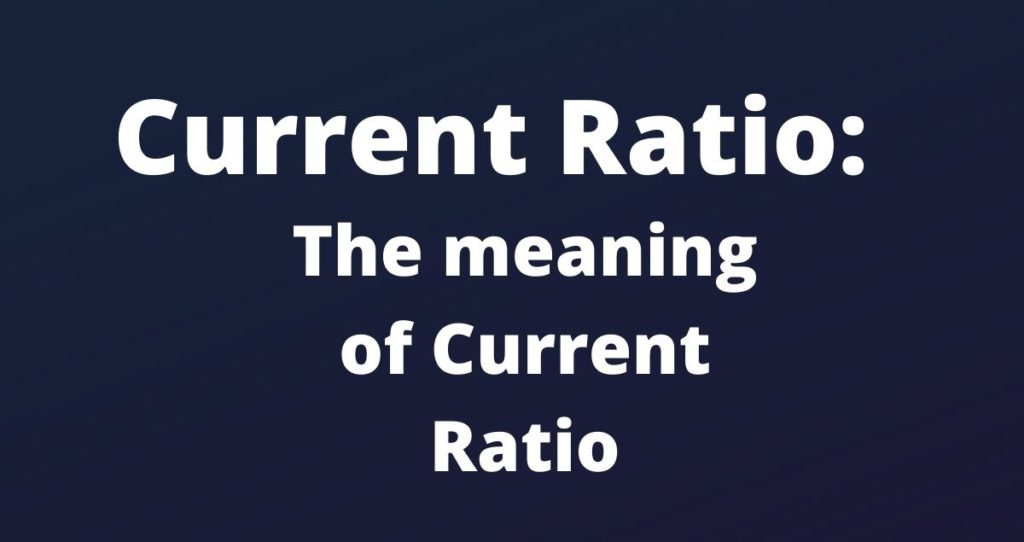What is the current ratio?
The current ratio is a financial ratio that is used to measure the liquidity of a company for meeting its near-term financial obligations. In order words, this ratio tells investors how likely a company will be able to pay off its current liabilities given the value of current assets in hand. This ratio is also known as the working capital ratio.
Current liabilities are the companies near term financial obligations such as account payable, income tax payable, bills payable, accrued expenses, etc.
On the other hand, the current assets include all assets of the companies such as cash and cash equivalents, inventories, supplies, accounts receivable, etc.
The current ratio is used by many investors to see how well a company is doing in the near term before making their investment decisions.
This ratio can sound an alarm for small businesses with a lot of liabilities. This is because small businesses do not have a lot of resources to cover near-term liabilities that bear a lot of interest.
The formula of current ratio
The current ratio is calculated by dividing the company’s current assets by its current liabilities.

The meaning of current ratios
- Current ratio > 1: A current ratio that is greater than one shows that the company has more current assets than its current liabilities. Investors like ratios that are great than one since they ensure that the company will be able to cover its short term financial obligations.
- Current ratio < 1: A negative current ratio means that the current assets are much lower than the current liabilities. In order words, the company is losing money on its investments since its working capital is negative. Many investors watch this ratio to make sure that the company is not losing money for an extended period of time. Companies that incurred a large investment usually have a negative working capital until their investment starts making money or recover the money through other investments. Furthermore, companies with a negative working capital struggle to raise money when they don’t have a convincing business structure that supports their liabilities.
- Current ratio = 1: A current ratio of 1 means that the company has an equal amount of current assets and current liabilities. This means that the company may be able to cover is expenses that are due in a year only if the conditions stay the same and the company does not experience more liabilities the rest of the operating cycle. This is not a good position to be in as it is difficult for a business to not experience expenses.
What is a good current ratio?
A good current ratio is anything between 1.2 to 2, according to Freshbooks. More current assets than current liabilities mean that the company can cover its short term financial obligations.
At the same time, the company will have more money left to cover any unforeseen expenditures without breaking the bank. For this reason, the higher the ratio the better.
More Learning resources
- Price-To-Book (P/B) Ratio: What Is P/B Ratio?
- Dividend Payout Ratio And How It Works
- What Is Asset Turnover Ratio? How Does It Work?
- Quick Ratio: What Is Quick Ratio?
- What Is Inventory Turnover Ratio?
- Debt To Income Ratio (DTI): What Is DTI?
- What Is Dividend Yield And How Does It Work?
- Debt To Equity Ratio Or Debt-Equity(D/E) Ratio
- Profit Margin Basics And Definition
- Return On Assets (ROA) Definition









